Choosing a surface finish for fine-pitch components
Welcome to our new blog series based on our experience with PCB manufacture and assembly, courtesy of our engineers. Over the years, we’ve seen our fair share of blunders and subsequent losses over the course of the hardware development process. With a bit of understanding, forward-thinking and patience many of these problems can easily be avoided. This series aims to tackle the understanding part with a look at some real-life examples we’ve encountered.
Today we are going to share with you a real case study involving a Seeed Fusion PCBA customer’s design. At the time of placing the order, the customer requested the default HASL surface finish, but listed in their Bill of Materials was a 0.4mm BGA. It’s a small BGA with only four balls in the array, but the combination of 0.4mm pitch BGA and HASL surface finish should ring alarm bells, and here’s why:
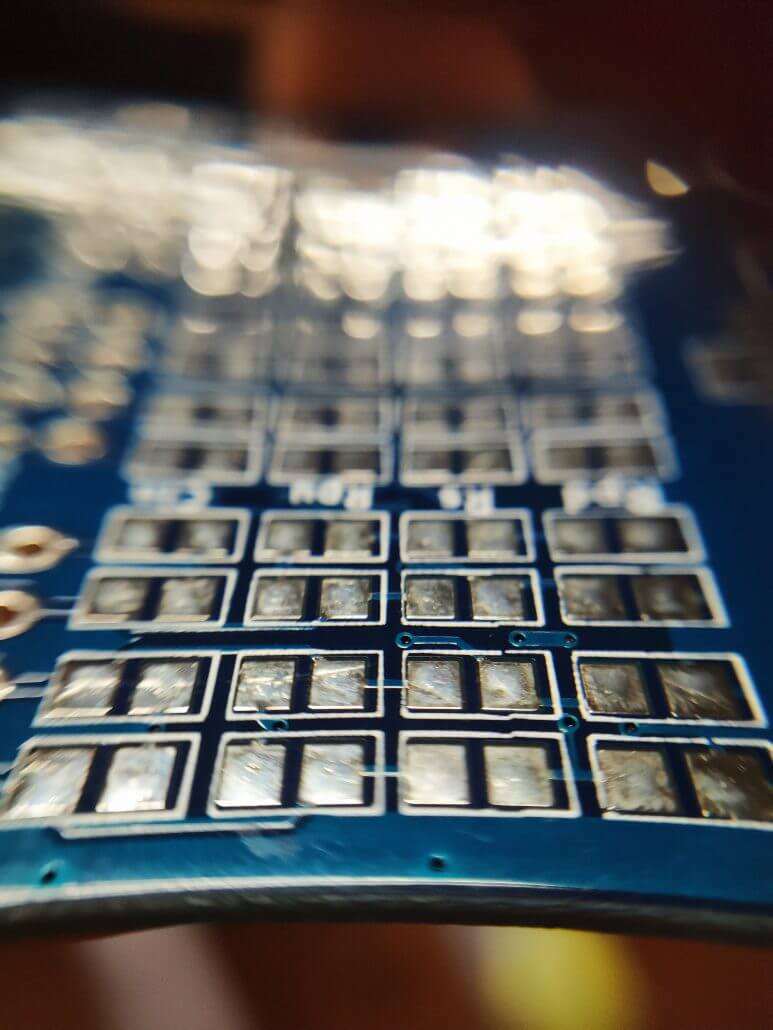
The HASL surface finish is essentially a coating of solder that protects the copper pads from oxidation. As its name suggests, the Hot Air Solder Level technique has the boards dipped in a bath of molten solder and then uses a hot air blade to remove as much of the excess solder as possible. But as anyone who has soldered a joint before knows, solder behaves very much like water in its molten state, in that it tends to form droplets and welcomingly coalesces with other liquified solder droplets. It is the high surface tension that results in an uneven surface and rounded edges, a meniscus, instead of covering the surface evenly.
Compare these images of HASL finish on the left and ENIG on the right:
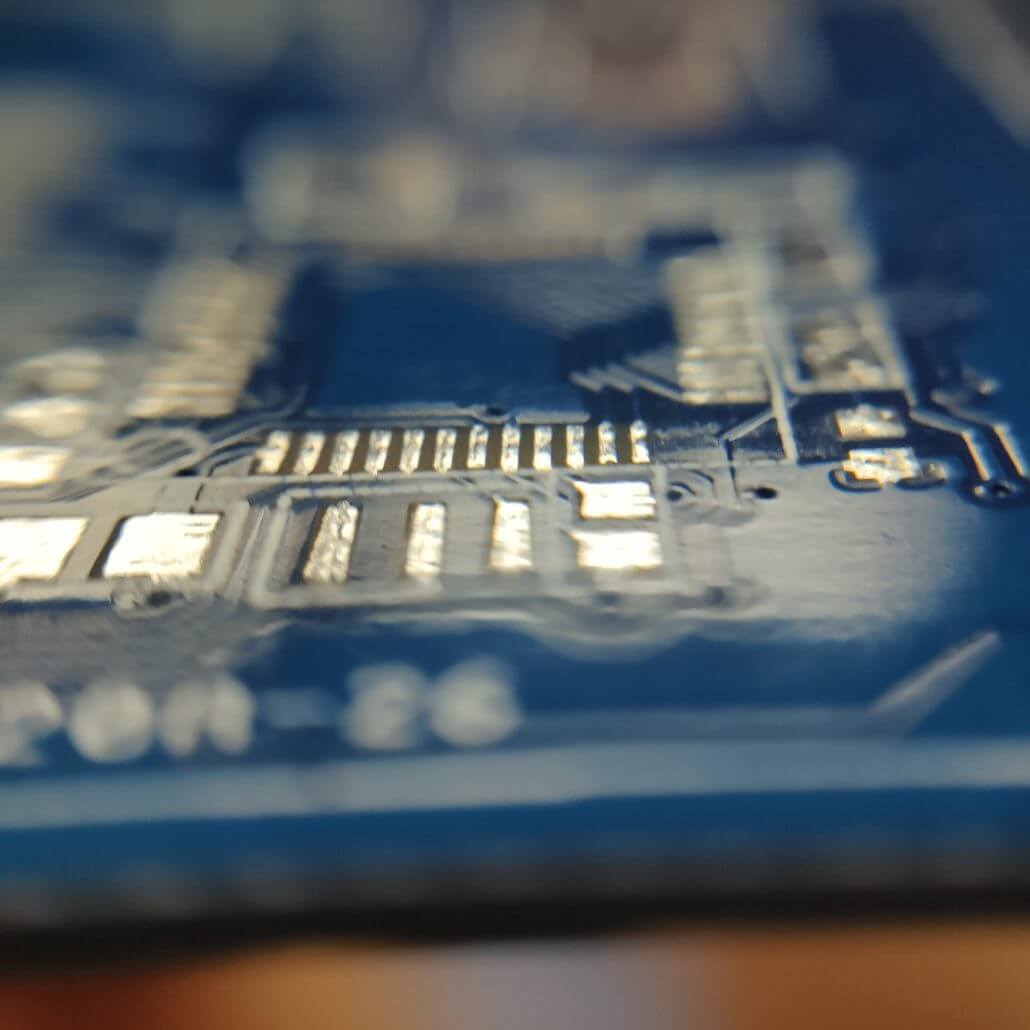
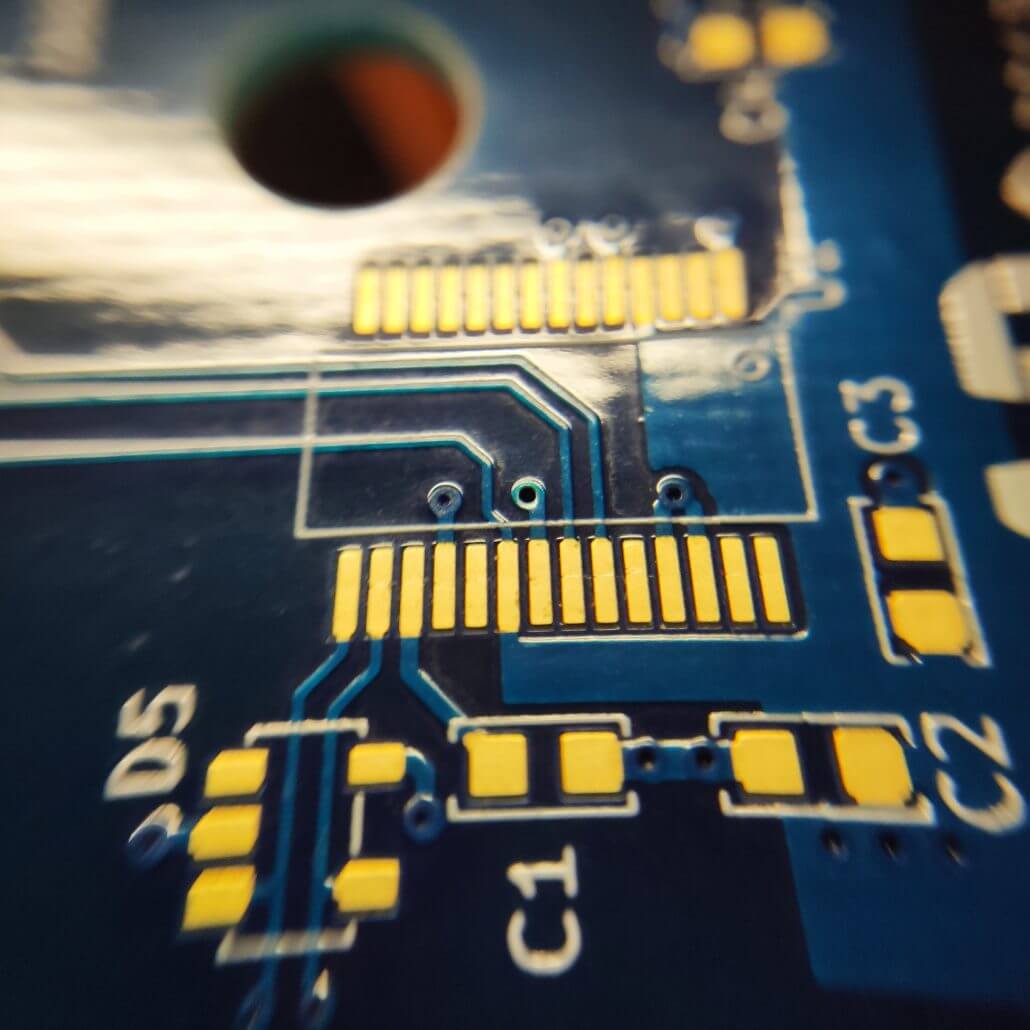
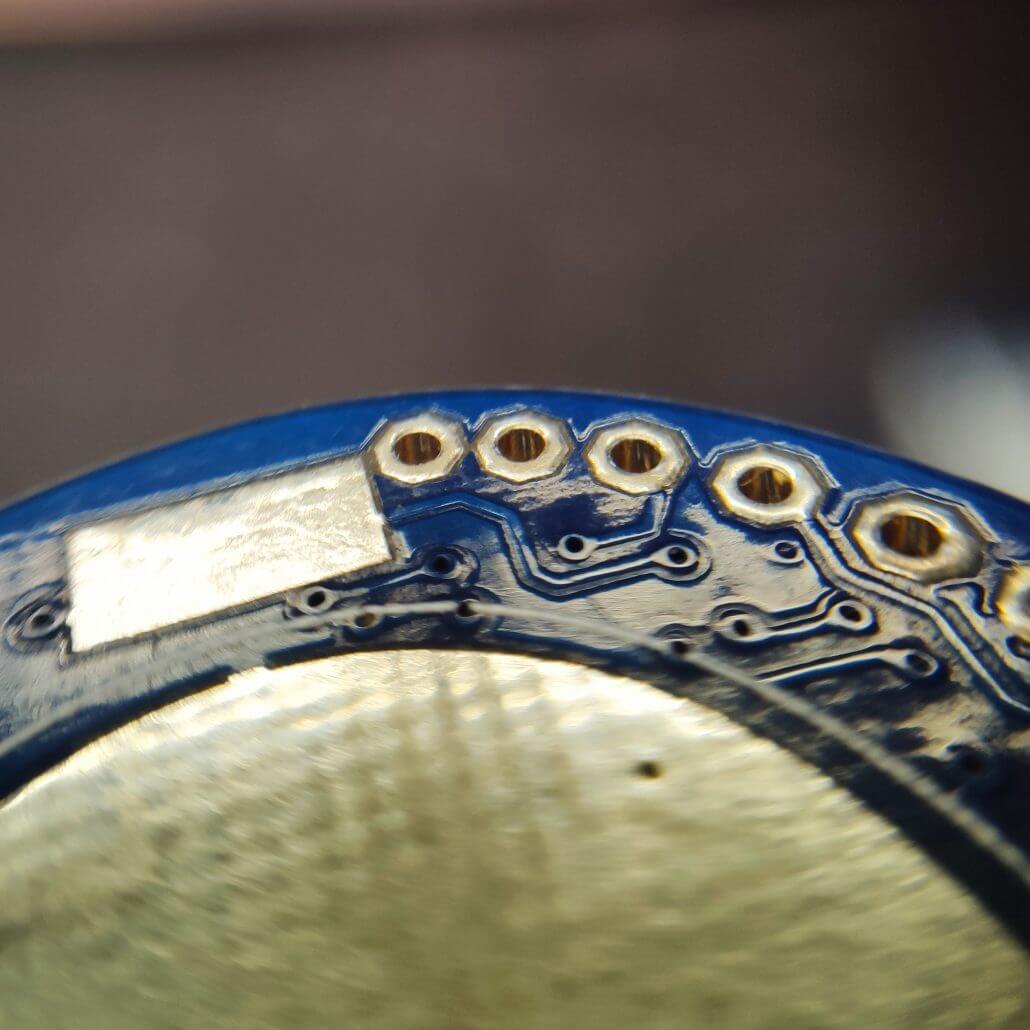
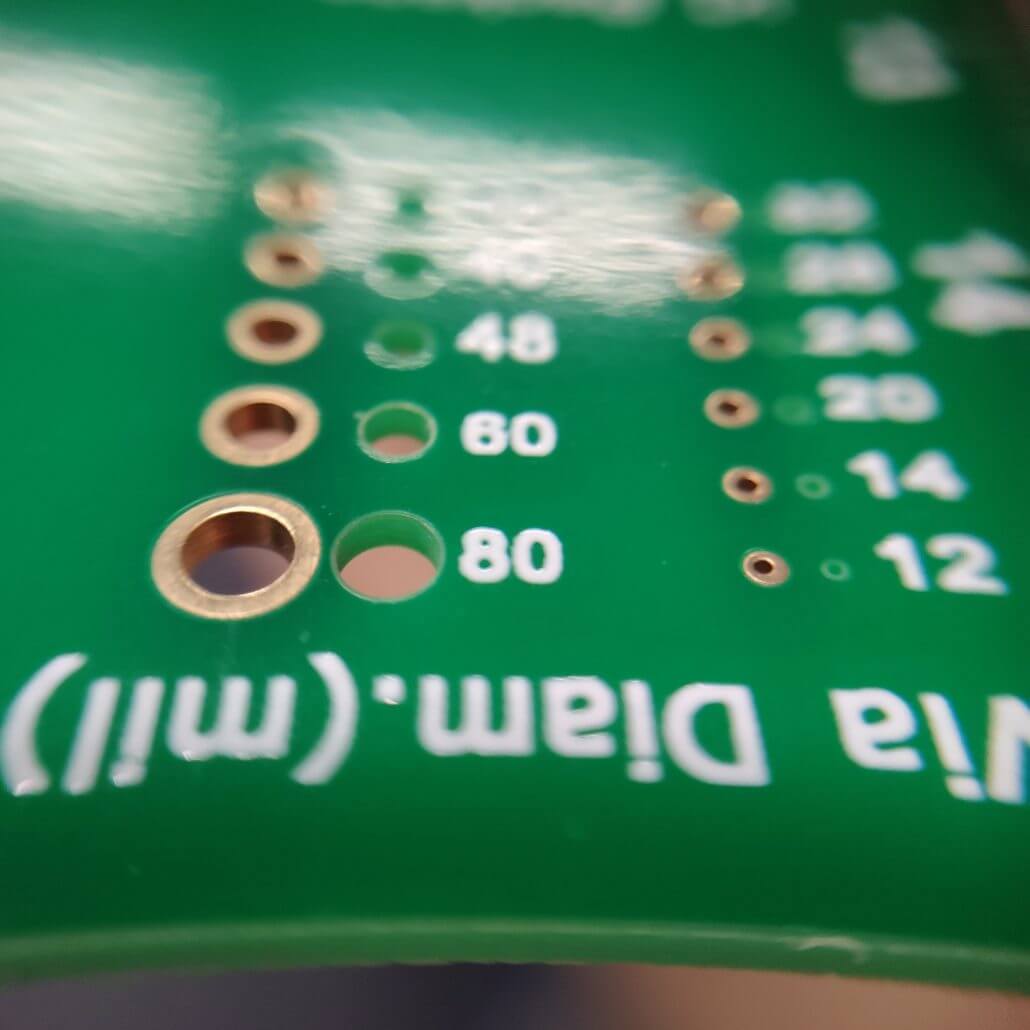
For larger pads and leads, the uneven surface, or poor coplanarity in technical terms, barely has any effect on the solderability of the pads, but as component leads and pads get smaller and closer together, it becomes increasingly more serious and can have a major impact on yield.
Despite this, the customer insisted on proceeding with the HASL finish and after an initial test run of 10 pieces, the BGA joints exhibited poor strength, reliability and showed signs of insufficient wetting, if at all on some pads. Analysis of the pads showed that 30% of the pads (that’s at least one pad per BGA) were of a different size or shape, resulting in poor gasketing during solder paste application which subsequently caused differences in solder ball size.
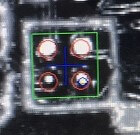
Furthermore, the quality of the HASL process and the make-up of the solder alloy affect planarity, so there are no set limits as to what size pads HASL can manage. But as a general precaution, fine pitch components with a pitch less than 0.5mm and 0.5mm pitch BGAs should not be using HASL. To be safe, you may want to consider raising the limit to even 0.8mm pitch pads BGAs if you are not familiar with the quality of the HASL process.
At Seeed, our go-to solution to this problem is to switch to the ENIG surface finish, Electroless Nickel Immersion Gold. This technique uses a chemical process to first plate the copper surfaces in nickel and then with a thin layer of pure gold on top. While it is more expensive than HASL (it’s really gold), the nature of the plating process allows it to offer superior surface planarity.
Historically, HASL was the most popular surface finish back to the heydays of through-hole technology because of its simplicity. But with the introduction of stricter environmental regulations, the lead-based solder finish became less and less popular and lead-free options, including ENIG and lead-free HASL, became more widespread.
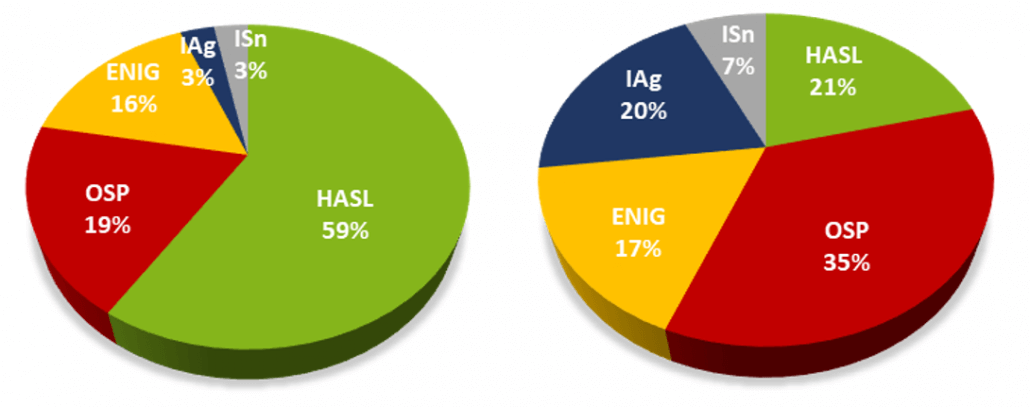
Notice that the volume of HASL surface finish used dropped drastically in favor of other lead-free variants. Now, the percentage is being pushed further by the demand for smaller form factors and therefore smaller components.
Each surface finish has its own advantages and disadvantages and is therefore suited for different purposes.
| Surface Finish | Characteristics | Cost |
| Lead-Free HASL | Poor surface planarity, suitable for larger pads and spacing. Not suitable for HDI boards. Process is dirty, smelly and requires high temperatures. Good solderability. | Middle-high |
| OSP | Pads are uniform and flat. Difficult to inspect, poor re-workability (outside of the factory), sensitive to handling. Process is simple, low cost and environmentally friendly. Good solderability. | Low |
| Immersion Gold (ENIG) | Pads are uniform and flat. Good solderability and corrosion resistance. Difficult process control, risk of black pad. | High |
| Immersion Silver | Pads are uniform and flat. Good solderability and re-workability. High storage requirements, easily oxidizes. | Middle |
| Electrolytic Gold | Coating is not uniform. Good as contacts (gold fingers etc.), bondable. Expensive, plating/bus bars required. | Highest |
It goes to show that while HASL, in both lead-free and leaded variants, is not suited for fine pitch components, there are many other alternatives that are either as cheap or reliable.
At Seeed Fusion, the common decision is between HASL or ENIG as these are the most popular choices for prototyping and relatively small batch orders. As production volumes move towards a mass scale, other surface finishes should be considered according to design and budget.
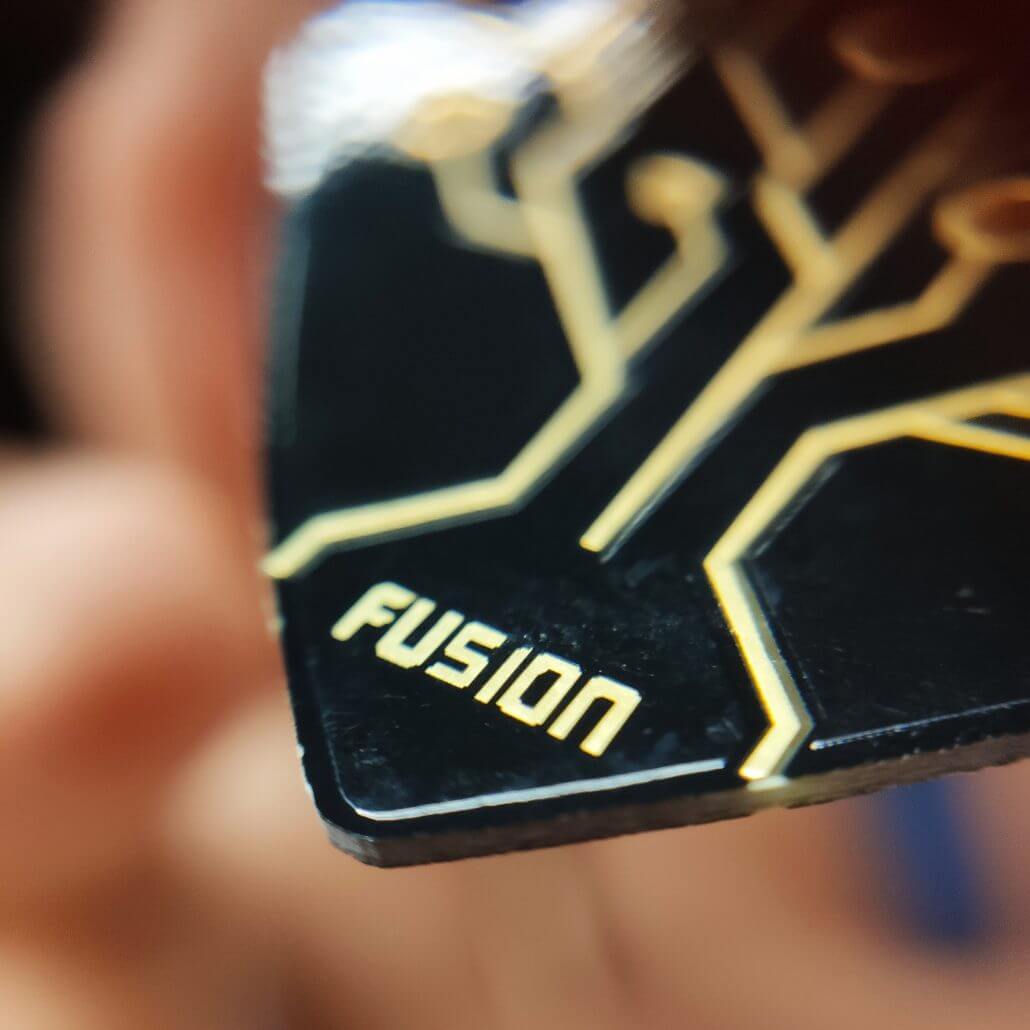
For more PCB design and assembly know-how, stay tuned to our new series and let us know what you think.
The Seeed Fusion service has been providing convenient and affordable PCB manufacture, PCB assembly and other hardware manufacturing services for over 10 years. The online quotation platforms make instant and transparent quotations possible with a few clicks.
For standalone PCB manufacture, prices start from as little as $4.90 for ten pieces. Premium and Advanced services are also available for more complex and tailored requirements.
Fusion’s star service is the turnkey PCB assembly service which takes care of PCB manufacture, components procurement and assembly, so you can get on with design and testing. All PCBA orders come with free shipping worldwide and a wide variety of options and additional services are available such as testing and certification.
Now, operation fees have been slashed for orders of over 100 pieces until the end of September. Find out more about the Seeed Fusion PCBA service today.